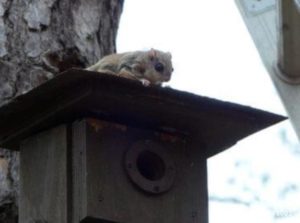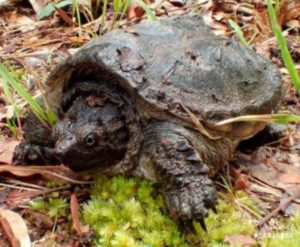
by Teacher Peter Manzelmann
With temperatures around zero degrees Fahrenheit and snow laying in un-melted drifts, I’ve been thinking quite a bit about how wildlife survive winter’s chill.
Animals have three basic strategies for cold weather survival: hibernation, migration, or toughing it out.
Flying squirrels huddle together in tree cavities for warmth. Sometimes as many as 20 individuals will pack in tightly to a single nest box or cavity!
Beavers pack on extra weight to burn during colder weather. A beaver’s tail is designed to store fat and shrinks in size over the winter as fat stores are used.
Black bears breed in early summer. But a complex adaptation delays implantation of a fertilized egg until the beginning of winter, after the female has had an opportunity to build sufficient fat reserves to sustain her through the period of inactivity and to nurse her cubs, born inside the winter den.
But perhaps the most fascinating winter adaptation is that of the turtle. Most species of freshwater turtles hunker down into the muddy bottom of ponds or lakes to wait out the winter. But turtles have lungs and breathe air, so how do they survive down there all season?
Believe it or not, turtles are able to absorb just enough oxygen from the water through body surfaces that are flush with blood vessels. One part that is especially well vascularized is the—cloaca or their —ahem—back side. The official term for this is cloacal respiration.

This snapping turtle has remarkable talents when it comes to surviving winter! Photo: Steve Eisenhauer
What’s more, some species—including snapping and painted turtles—can temporarily switch their metabolism to one that doesn’t require oxygen! They employ this trick when the O2 level in the water gets too low. However, prolonged periods of anaerobic metabolism will result in the buildup of acids in their tissue, a condition that can prove fatal. To deal with this, painted turtles are able to mobilize calcium from their shells to neutralize the acid, in much the same way we take calcium-containing antacids for heartburn.
So before you bemoan the icy temperatures, think of these amazing reptiles and their extraordinary adaptations. We humans can wait out winter snug in our houses, while turtles spend the season breathing from their back sides.
(Special “thanks” to Kirsten Werner from Natural Lands Trust for sharing these unusual winter survival tips.)



Follow and Contact Us